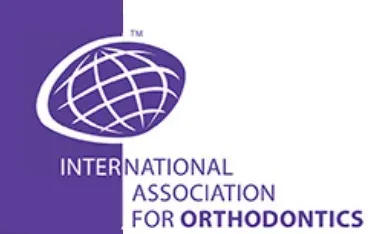June’s Tip

Orthodontic Loops in Straight Wire System Part I
By Dr. Adrian J. Palencar, MUDr, MAGD, IBO, FADI, FPFA, FICD
May 2021
Orthodontic loops are artistic wire bends, and they may be part of the sectional wire or full arch wire. Orthodontic loops may be prefabricated and distributed by the supplier. Alternatively, they may be custom bent by the orthodontic practitioner. There is a plethora of loops used in orthodontics: i.e. Boot Loop, Bull Horn Loop, Helical Closing L:oop, Tear rop Loop, Omega Loop, “T” Loop, “L” Loop, Key-hole Loop, Mushroom Loop, etc. Similar loops are also incorporated into functional appliances. Loops are rather difficult to bend; the process requires ample of experience and they are time consuming. The material of choice is a Stainless-Steel wire.

The following are functions of orthodontic loops in SWA:
- They increase the inter-bracket distance and decrease the force of the wire, thus making the wire more flexible
- In sectional mechanics – loops reduce the friction during the space closure
- They help to control the tip and the torque of teeth in juxtaposition
- They serve as hooks for intra-arch and inter-arch elastics
The easiest loops to bend are Helical Loop and Vertical Open Loop (discussed in the IAO Monthly Tip March 2021). Helical loop is the simplest loop to bend by the orthodontic clinician. It is not widely used in Straight Wire System; however, it is used extensively in Begg and Tip-edge systems as a hook to attach elastics and make the arch-wire more flexible.
Functions of the Helical loop:
- Increases the inter-bracket distance, thus making the arch wire more flexible
- Creates a hook to attach elastics (intra-arch and inter-arch elastics), closing coil springs, elastomeric chains, Face mask, etc.
- Creates a stop to prevent the arch wire sliding
- Two helical loops in front of the molar tubes function as a bilateral space maintainer
- Two Helical loops in front of the molar tubes with the arch wire being longer (about 2.5 mm in front of the incisors) – proclines the incisors (labial moment)
- Two Helical loops behind the second bicuspid brackets, tied to the molar tube hooks with the elastomeric ties, render the arch wire shorter – retroclines the incisors (lingual moment)
- The arch wire keeps the cheeks away from the erupting teeth, thus helping to maintain expanded arches (Frankel effect)
Tweed loop forming pliers are the author’s pliers of choice for artistic loop bends, which we will be using extensively with later Tips of the Month in Mulligan mechanics. The author’s second choice would be the Loop forming pliers (Long beak, Light wire pliers); however, they are not as efficient as Tweed loop forming pliers.



Fabrication of Helical Loop
(approximately 3.0 mm in diameter)
References
- Cerum Ortho Organizers catalogue
- Ellchiro Nakajima, Manual of Wire Bending Techniques; 22 – 23
- Rondeau Seminars, Case Finishing manual; 121,
